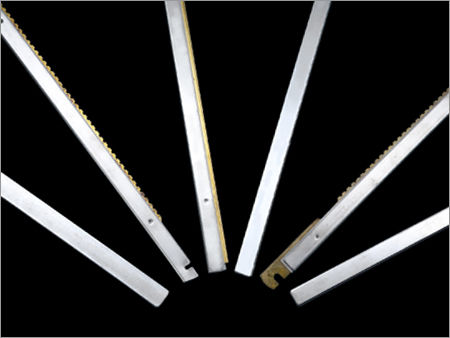
Maintenance of any circuit breaker is possible, without interruption of power.This ring bus-bar system has redundant path to the circuit and failure of one section does not interrupt the service completely.This ring bus-bar system has the advantage that there are always two parallel paths to the circuit and failure of one path does not interrupt the service completely. For example CB1 and CB2 on one line, where are CB3, CB4 on another line.

In this type of arrangement, two circuit breakers serve on one line.
Whenever a fault occurs on the bus-bar, the undisrupted supply to the circuit can be maintained by transferring it to other bus-bar. By keeping the main bus-bar un-touched, testing of feeder circuit breakers can be done by putting them on spare bus bar. In the double bus-bar type of arrangement, it is possible to have one bus-bar “energized” and become convenient to carry out repairs on the other whenever required. There is an arrangement of a bus-bar coupling switch for transferring operation from one bus-bar to another.ĭouble bus-bar sectionalized arrangement can be made as per the requirement by the addition of circuit breakers. Among the two, any one of the bus-bar sections can be used as desired. In case of double bus-bar system, low voltage and high voltage bus-bars are duplicated. For any expansion, complete shutdown is to be carried out. In case of fault, the complete system will be switched off. The advantage of this system is that fault on one part of the bus-bar does not completely shut down the total system. Single bus-bar sectionalized arrangement can be made by adding circuit breakers wherever required. Three phase, 440 V and single phase 230 V outgoing supply lines are connected by isolator, circuit breaker, and step down transformer as shown in the above figure. To the same single bus-bar few incoming and outgoing line are connected.Īs an example, two 11 KV incoming lines are connected through circuit breaker and isolator. Single bus-bar SystemĪs the name itself indicates, that a single bus-bar is used in this system. Based on the construction of the bus bar, they are divided as follows. Important bus-bar arrangements are discussed in this article. The circuit breakers are arranged to get the maximum availability to plant operations. Disadvantages of Ring Bus-bar System Electrical Busbar Purpose of Bus-barīus bars are arranged in a different configurations, any particular arrangement of bus-bar is to achieve adequate operating flexibility, sufficient reliability and minimum cost. As Bruce Kuhn, Klein’s director of product development, test and measurements products, told us, “If you make a tester like this sensitive enough to detect voltage on the ‘outside’ of a tamper-resistant outlet, it will be too sensitive in a crowded electrical box that contains several hot wires.” 2 Because the NCVT-3 is designed to detect standard and low voltage, it picks up the standard voltage when placed at the openings of a live tamper-resistant outlet, but from a distance, displaying it as low voltage, still confirming that the outlet is live. 
With these outlets, a traditional non-contact voltage tester doesn’t always work because it can read only standard voltage. To insert a plug in one of these outlets requires equal pressure on both prong openings (it’s a safety issue for children). The reality is that because it can read low voltage, the NCVT-3 can still pick up the current from the outside of the outlet, which is essential when dealing with the tamper-resistant outlets now required by electrical code. At first glance, this may seem like a problem, seeing as most other non-contact testers read power from an outlet only by being inserted into one of the openings.

The NCVT-3 is unique because it cannot be inserted into an outlet. According to the company, the tool can also handle a drop of up to 6½ feet, which isn’t bad considering it’s a delicate piece of electronics. For a tool that’s often used in dim basements-or situations where the lights aren’t working-this is a minor but very helpful feature, and the Klein was the only model we tested that had this functionality. But the most useful feature is actually its bright LED flashlight, which can be operated independently of the voltage tester.
The controls on the NCVT-3 are intuitive, the display is clear, and when testing it in a breaker panel full of live and dead wires, it was sensitive enough to read a dead wire from a short distance without giving us false positives from nearby live wires. This feature also makes it compatible with tamper-resistant outlets, which are now required by electrical code.

And unlike some models we tested, it can automatically tell the difference between the two. The Klein NCVT-3 is a dual-voltage model, so it registers both standard voltage (house wiring) and low voltage (like irrigation, doorbells, thermostats).








 0 kommentar(er)
0 kommentar(er)
